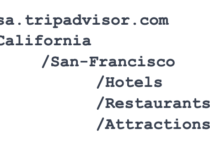SEO-Based Translation: Gateway To New Markets
Unlock new markets with SEO-based translation. Discover how effective localization and keyword optimization can elevate your business in today’s digital world.
SEO-Based Translation: Gateway To New Markets
In today’s digital landscape, you might often find that the reach of your products or services extends far beyond your local borders. The internet has made our world more interconnected than ever. As a result, effectively communicating with potential customers in their native language is crucial. Here’s where SEO-based translation comes into play, acting as your bridge to new markets. It’s not just about translating words; it’s about translating concepts, emotions, and the essence of your brand, all while making sure search engines understand what you’re offering. Let’s delve deeper into how SEO-based translation can open up new avenues for your business.
The Importance of SEO in Translation
You might be asking yourself, “Why should I care about SEO when translating my content?” Well, SEO plays a critical role in how your translated materials will perform on search engines in different linguistic markets. It ensures that your website doesn’t just reach a foreign audience but does so with the ability to be found easily.
Understanding the local culture, language nuances, and even the search behavior of your target audience is paramount. You’ll need to adapt keywords, meta descriptions, and content tone to resonate with new users. When you align your translation with SEO principles, you not only foster better communication, but you’ll also significantly increase your chances of being found online by those searching for your products or services.
What is SEO-Based Translation?
So, what exactly does SEO-based translation entail? It’s not just a straightforward word-for-word translation; rather, it’s the art of converting your text while embedding it with local SEO strategies. This means doing comprehensive keyword research in the target language and optimizing your content accordingly.
Your translation process should involve both linguistic experts and SEO specialists. They’ll work together to ensure that your content maintains its original meaning while using the appropriate phrases that users actually type into their search engines. Think of it as a two-part strategy: linguistic accuracy combined with digital visibility.
Localizing Your Content
Now that we’ve touched on what SEO-based translation encompasses, let’s talk about the importance of localization. Localization goes beyond translation; it involves adapting your content to align with the cultural expectations and behaviors of your target market.
When localizing, you’ll want to consider factors such as local idioms, societal norms, and even the way colors or symbols are perceived. For instance, a product that is successful in your home country might not resonate the same way elsewhere due to differing cultural contexts. By localizing your content, you’re making it more relatable and trustworthy to your international audience.
Understanding Keywords in Different Languages
It’s easy to overlook the fact that keywords do not translate directly. What you perceive as an effective keyword in English might have a wholly different implication or usage in another language. For instance, a health & wellness term may have a myriad of colloquialisms across regions.
Conducting keyword research in the target language is a game-changer. Tools like Google Keyword Planner or other SEO software can help you identify which words and phrases are most frequently searched by local users. You may find that local competitors are using different popular terms that could be vital for your translation. Understanding these nuances can make your content more effective.
Utilizing Professional Translators
When diving into the world of SEO-based translation, you’ll discover that using professional translators is non-negotiable. Hiring translators who are not only fluent in the target language but also well-versed in SEO strategies makes a substantial difference.
Look for translators who have experience in your industry. They will understand the specific terminology that needs to be effectively communicated. Additionally, they might have insights into local trends and best practices, which can significantly enhance your translation’s effectiveness. This will ultimately save you time and ensure that your message is clear and compelling.
Technical Aspects of SEO-Based Translation
A common pitfall during the translation process is neglecting the technical aspects that allow for SEO optimization. Elements like title tags, meta descriptions, alt text for images, and headings should all be considered during your translation efforts. Each of these elements should be tailor-made to suit the local audience’s search habits.
It’s also wise to ensure that the overall structure of your website is conducive to SEO across different languages. For instance, the URLs should be appropriately translated and optimized to reflect the local keyword strategy. Simplifying these technical details can sometimes be the difference between being found by potential customers or being lost in the vast digital wilderness.
Content Formatting and Structure
When engaging in SEO-based translation, keep in mind that formatting and structure can vary greatly from one language to another. Some languages are longer than others, potentially altering the way your original content is presented.
For instance, when transitioning from English to another language, the text may expand or contract, which can affect how it looks on web pages. It’s crucial to allow your translated materials to fit seamlessly into your website’s design while ensuring that it adheres to SEO best practices.
Keeping Up with Trends
Digital marketing trends are always shifting, and as a business owner, you’ll want to stay ahead of the curve. This includes keeping an eye on developments in SEO practices and translation technologies.
It’s essential to regularly revisit and update your translated content to reflect changing trends. Whether new keywords become popular or search engine algorithms evolve, you’ll want to ensure that your translated materials remain optimized over time. Engaging with SEO blogs, joining forums, and incorporating feedback will set you on the right path to maintaining your online presence.
The Role of Machine Translation
Machine translation has made significant strides in the last few years. While tools like Google Translate can help with basic translations, they shouldn’t be solely relied upon, especially for SEO-based translation.
Machine translation can provide you with a rough draft, but without human touch and linguistic finesse, it often falls short in terms of nuance and SEO readability. That said, machine translation can serve as a helpful starting point. You can then have a professional translator refine and optimize the output, ensuring it’s both accurate and search-friendly.
Balancing Cost and Quality
As with any service-related industry, there’s often a balancing act between cost and quality. You might feel tempted to choose the cheapest option for translation services, but this can lead to significant downsides that ultimately cost you more in lost opportunities.
Investing in professional SEO-based translation can yield higher long-term returns. When you consider the potential income generated from successfully entering new markets, the initial costs of effective translation start to look more like an investment rather than a bill you need to pay.
Case Studies: Success Through SEO-Based Translation
Learning from others is a fantastic way to grasp the practical applications of SEO-based translation. Numerous companies have successfully leveraged SEO-translations to expand into international markets.
Take, for example, a tech startup that managed to double its monthly traffic within three months of implementing SEO-based translation. They conducted thorough keyword research and localized their website content to cater to distinct regions. Their approach not only improved their search rankings but also attracted a loyal customer base.
Another example can be found in the travel sector, where a hotel chain adapted its marketing strategy for different cities by employing local dialects and relevant keywords. By tapping into local cultural nuances and utilizing SEO efforts, they saw a 40% increase in bookings from those regions.
These case studies highlight that meaningful translation, when done right, can yield substantial returns and foster international relationships.
Measuring the Results
It’s crucial to monitor the performance of your translated content over time. Using tools like Google Analytics can help you measure traffic, engagement, and conversions driven by your translated pages.
By closely tracking metrics such as bounce rate, time spent on page, and conversion rates, you can identify what’s working and what needs improvement. This ongoing analysis will allow you to refine your approach, ensuring that you’re continually optimizing for both SEO and audience engagement.
Implementing Feedback Mechanisms
Encouraging feedback is an excellent way to adjust your strategy based on real-world interactions. Engage with your audience through surveys or direct communications to gather their thoughts on the accessibility and relevance of your translated materials.
Understanding how real users interact with your content can show you where you might need further adjustments. Acknowledging feedback from your audience will indicate that you care, and it will foster a deeper connection with your brand.
The Future of SEO-Based Translation
As we move into an ever-more globalized world, the importance of SEO-based translation will only continue to grow. The rise of AI and machine learning technologies means that translation companies are more capable than ever, offering advanced services that could improve both speed and accuracy.
However, this doesn’t eliminate the need for professional human translators. Balancing technology with human touch will be the new standard. Your SEO-based translation strategies will need to evolve alongside these technological advances to ensure that you remain competitive in a rapidly changing market.
Embracing a Multilingual Future
Consider embracing multiple languages from the very beginning of your content strategy. Targeting diverse audiences early on can put you ahead of competitors who may still be hesitant to break out of their home markets. Remember, the earlier you start, the more likely you are to capture audiences that are waiting for your message right now.
While venturing into international waters may seem daunting, the opportunities that await are tremendously exciting. With SEO-based translation, your business doesn’t just become a part of a larger conversation — it sets the stage for a vibrant and thriving dialogue, opening doors that lead to exciting new markets.
Conclusion
In a world where communication knows no boundaries, embracing SEO-based translation will undoubtedly pave the way for new opportunities. You’ll not only reach more potential customers but will do so in a manner that respects and celebrates cultural nuances.
As you embark on this journey, remember that SEO-based translation is not merely about converting text; it’s about building relationships and understanding your audience on a deeper level. The tools and strategies to unlock international success are all at your fingertips. In our ever-evolving global market, make sure that you’re ready to bridge the gap.
If you found this article helpful, please clap, share your thoughts in the comments, and subscribe to my Medium newsletter for more insights. Your engagement helps foster a community of learnings, and I would love to hear your experiences with SEO-based translation!
Disclosure: This story incorporates AI assistance for content creation.


